The genus Lactuca (wild lettuces) is a large group of edible weeds that look like a mix between lettuce and dandelions. Often confused with dandelions, these plants can be very confusing for beginning foragers. Some wild lettuce plants are incredible, delicious greens, some are very bitter. Today we'll identify a few types of common wild lettuce and their look alikes and discuss how they can be used in the kitchen.

Identifying Wild Lettuce
All varieties of lettuce are in the genus Lactuca, which includes cultivated lettuce (Lactuca sativa). At a higher level they're also related to dandelions, chicory, thistles, and many other plants in the Asteraceae family.

The word Lactuca comes from the Latin lactātus, specifically the word lac or milk, referring to the fact that all plants in the genus give a white milky sap when cut, known as lactucarium.
The Lactucas have a few distinct characteristics that usually make it easy to separate from look alike plants-none of which are dangerous. Here's three important things to look for.
- Lactuca plants give off white latex when cut.
- Lactuca plants have hairs on the midribs of the leaves, although this may be absent in some young plants.
- The leaf shape can vary between plants of the same species and is dependably irregular.

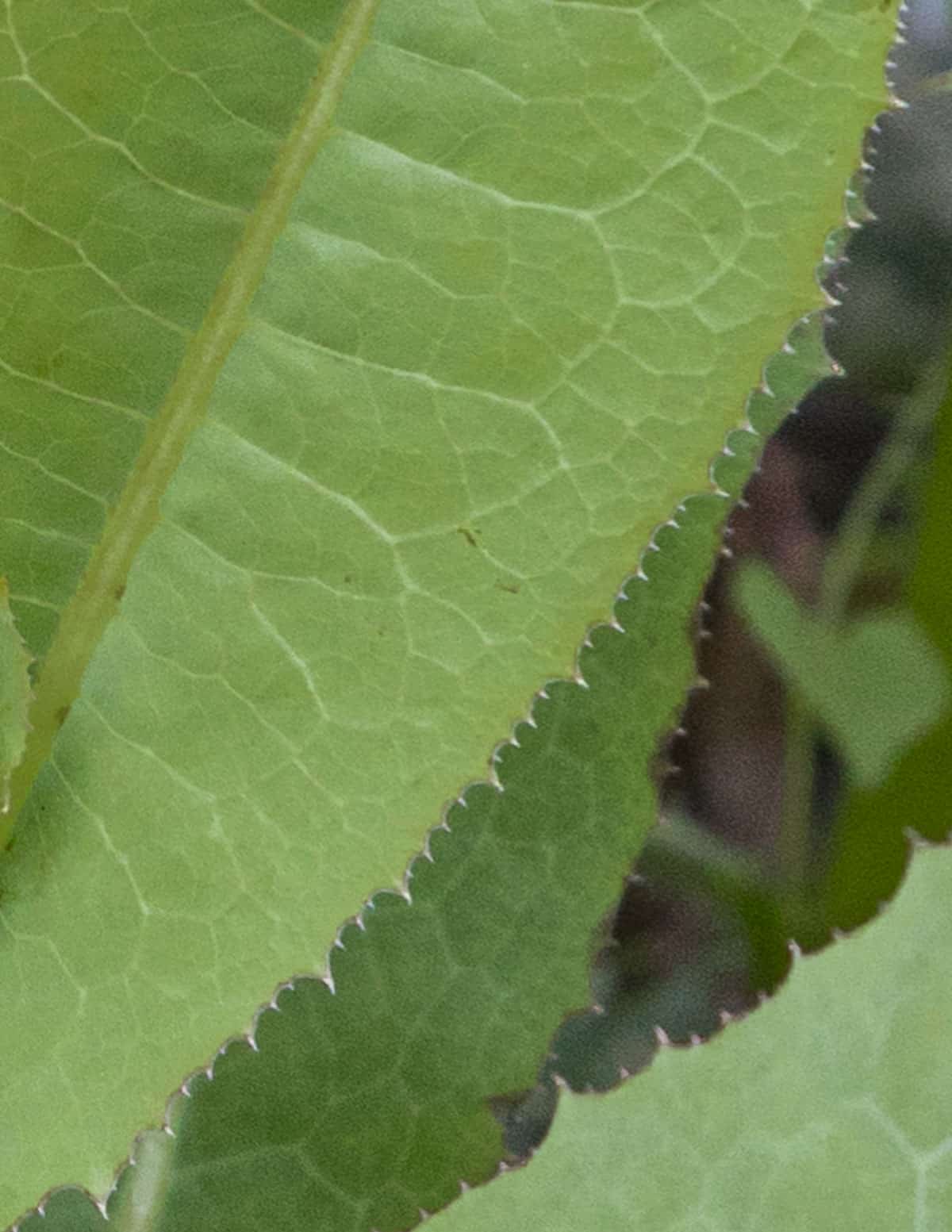
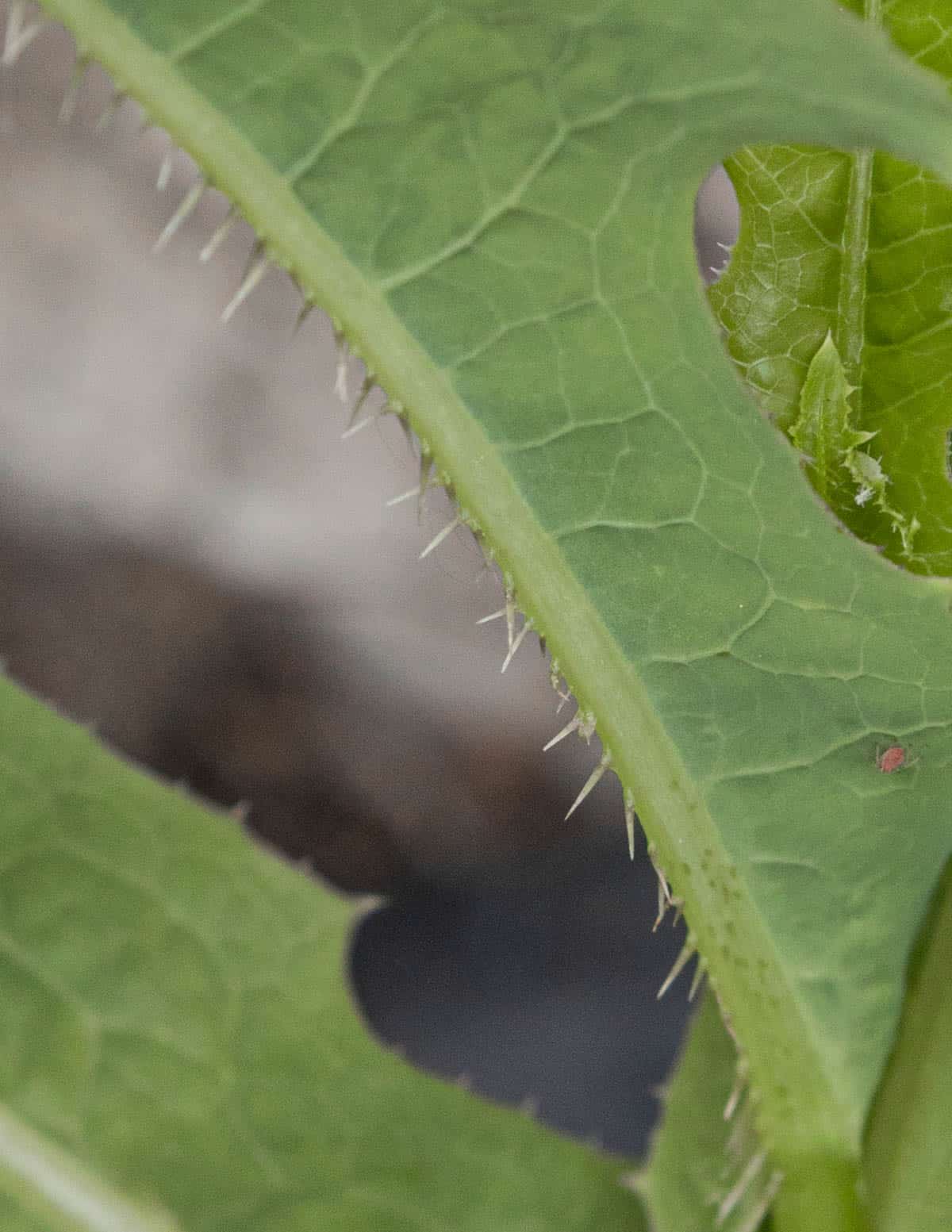
As the plants mature many will make what look like small, yellow dandelion flowers. A few varieties can make blueish or white-colored flowers.
One of the traits of the Lactucas I notice is the panicle of small flower buds at the top. Think of a panicle as a cluster of flowers that looks like oats drooping in the wind.

The pictures of wild lettuce (L. canadensis) developing a panicle below were taken over the course of a week. the plants can look very different over a short period of time.




Wild Lettuce Look Alikes
The most important thing to know is there are no poisonous wild lettuce look alikes, but there's a number of related plants that can be very confusing.
I'll briefly go over chicory and thistles, but dandelions and sow thistle, the two plants I see most often confused for plants in the genus Lactuca will be covered more in depth. Prenanthes species are yet another (although lesser-known) edible look alike.
Chicories are easily confused with dandelion leaves and the two plants are interchangeable in the kitchen. I can usually tell wild chicory from wild lettuce by their blue flowers. But, some types of wild lettuce like hairy lettuce (Lactuca hirsuta) and prairie lettuce (L. ludoviciana) can have blue-ish flowers too.
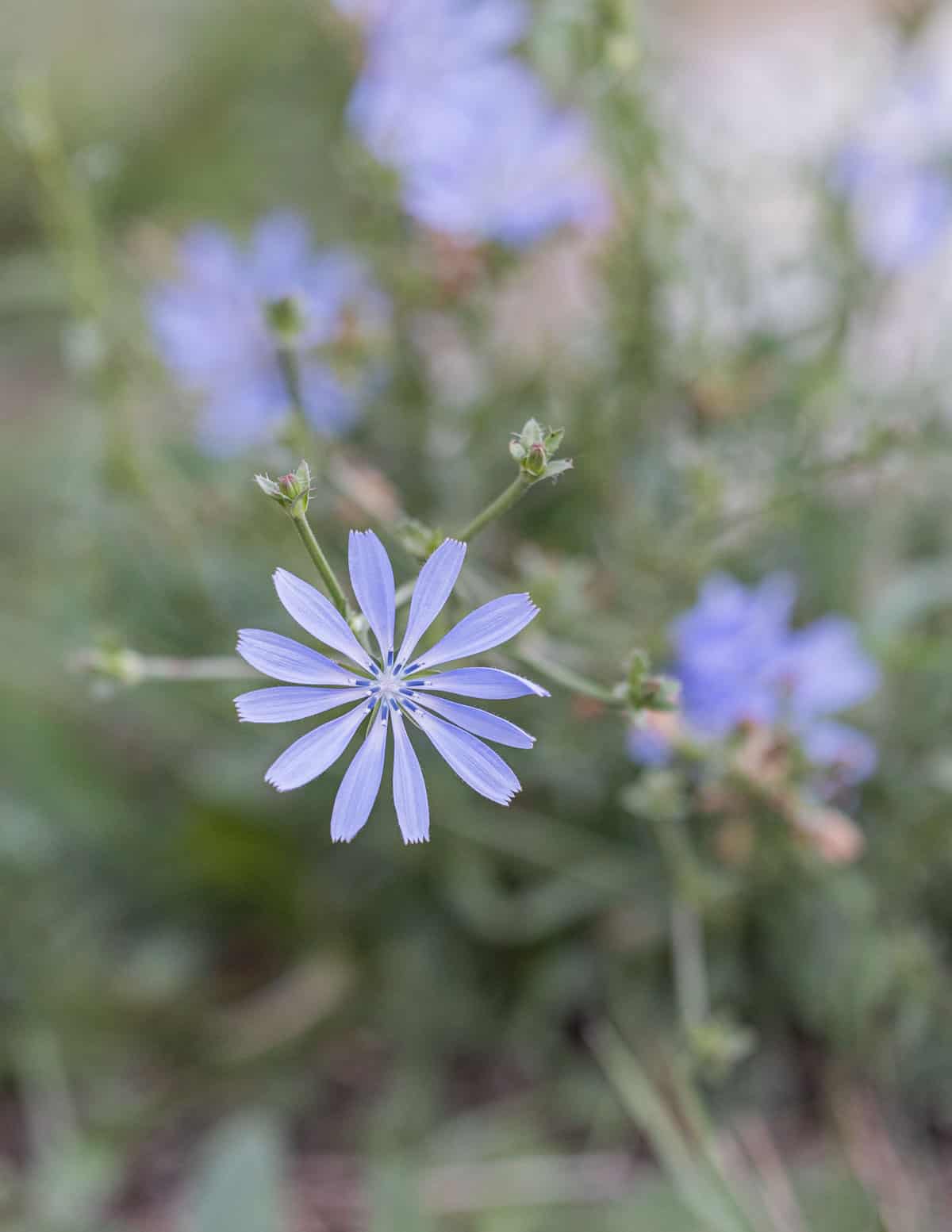
A recurring theme of this post, and possibly the most useful characteristic to know is that wild lettuce will almost always have hairy leaf midribs when look alike plants usually do not. The thistle infographic below is one example.

Confusingly, sometimes wild lettuce plants can be found without hairy mid ribs. Typically this is with young plants like the tasty Lactuca pictured below I still can't identify.

Now lets move onto comparing dandelions, wild lettuce, and sow thistle.
Dandelion vs Wild Lettuce
Dandelions could be the plant most commonly confused with wild lettuce. Here's a few key differences between them:
- Dandelions have a smooth leaf midrib. Wild lettuces have leaf midribs that are sparsely to densely hairy.
- Dandelions have a round leaf midrib. Wild lettuce leaves have a triangular midrib that can be deeply keeled, like a boat.
Besides the midribs, one of the easiest ways to differentiate wild lettuce from dandelions is by the flowers. Although both types of plants may produce yellow composite flowers that look like dandelions, how the flowers grow is very different.
As we covered, wild lettuce flowers grow from a branching panicle that makes many small flowers. By contrast, dandelions have a larger, single flower coming from a single stem.
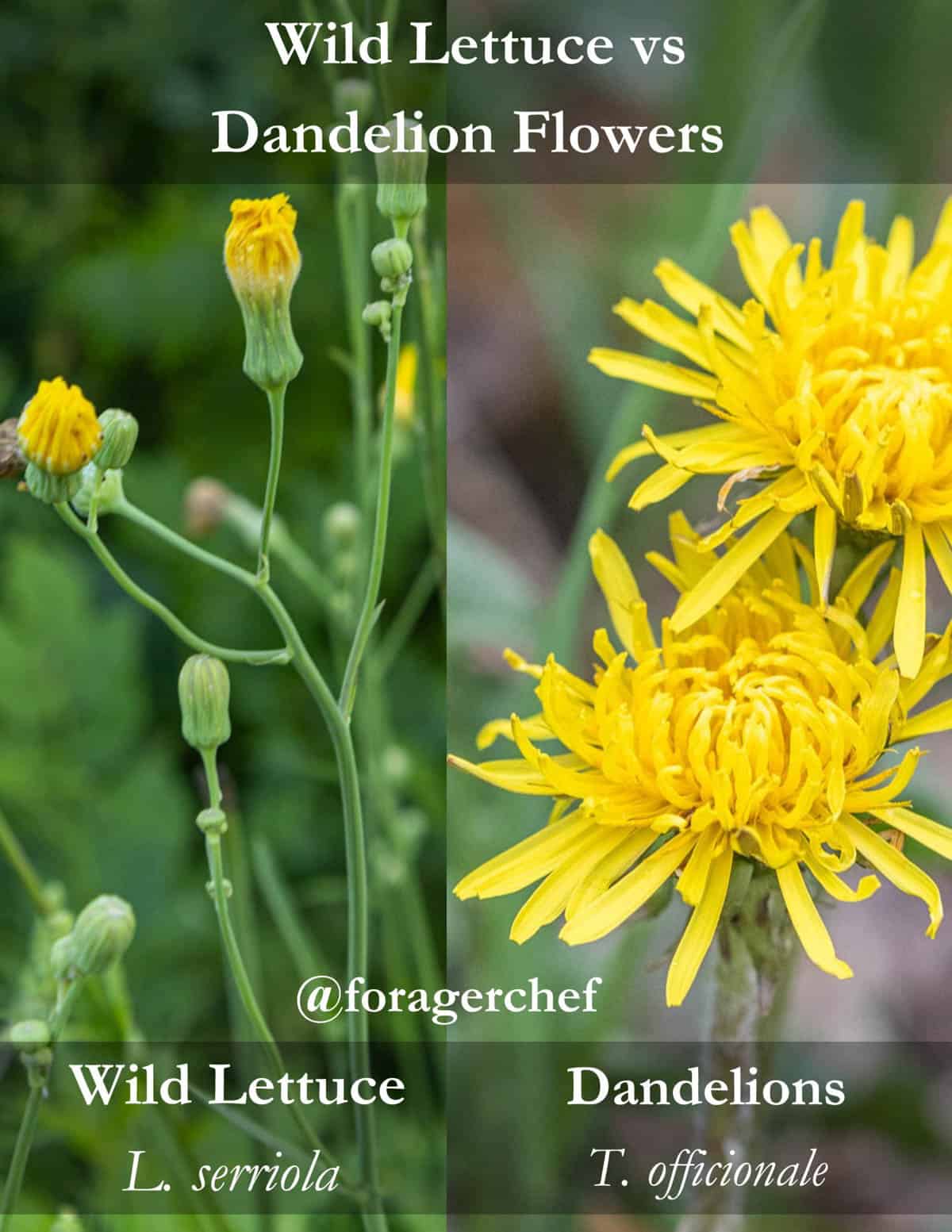
The heights of the plants is also very different. Dandelion flowers grow from a circular basal rosette of leaves on the ground and will rarely come past your shin.
Wild lettuce flowers grow from a towering flower stalk that can be 10 feet tall in the case of tall blue lettuce (Lactuca biennis) but some may be smaller, like Lactuca saligna.

Sow Thistle vs Wild Lettuce
Sow thistle is also easy to confuse with wild lettuce and dandelions as the leaves and flowers have a similar shape. Just as with dandelions, there's a few ways to tell them apart.

Once again, sow thistle plants will have a smooth leaf midrib. Wild lettuce plants will usually (but not always) have spines or hairs along the midrib of the leaf.

Sow thistle flowers look very similar to wild lettuce flowers but they're usually larger. As the plant grows the leaves have a distinct way of clasping the stem as you can see in the image below.

Types of Wild Lettuce
There's many varieties of Lactuca. All are edible with slightly different flavors and levels of bitterness. Sam Thayer's Field Guide describes the most common species of Eastern North America. Besides the species described in this post, there's also:
- Woodland Lettuce (Lactuca floridana)
- Hairy lettuce (Lactuca hirsuta)
- Prairie lettuce (Lactuca ludoviciana)
- Blue lettuce (Lactuca pulchella)
- Willow-leaf lettuce (Lactuca saligna)
There's also the European bitter lettuce, a.k.a opium lettuce (Lactuca virosa) which is often harvested for its "medicinal properties".

Prickly Lettuce (Lactuca serriola)
The plant most know as wild lettuce, and the Lactuca species responsible for giving wild lettuces as a whole a bad reputation as an edible plant. Native to the Mediterranean, L. serriola is a prickly weed that grows widespread in disturbed areas, sidewalks and yards.

The lines of prickles on the mid rib and leaf margins soften only slightly after cooking making it a sub-par edible plant that should be mixed with other, better tasting ones.
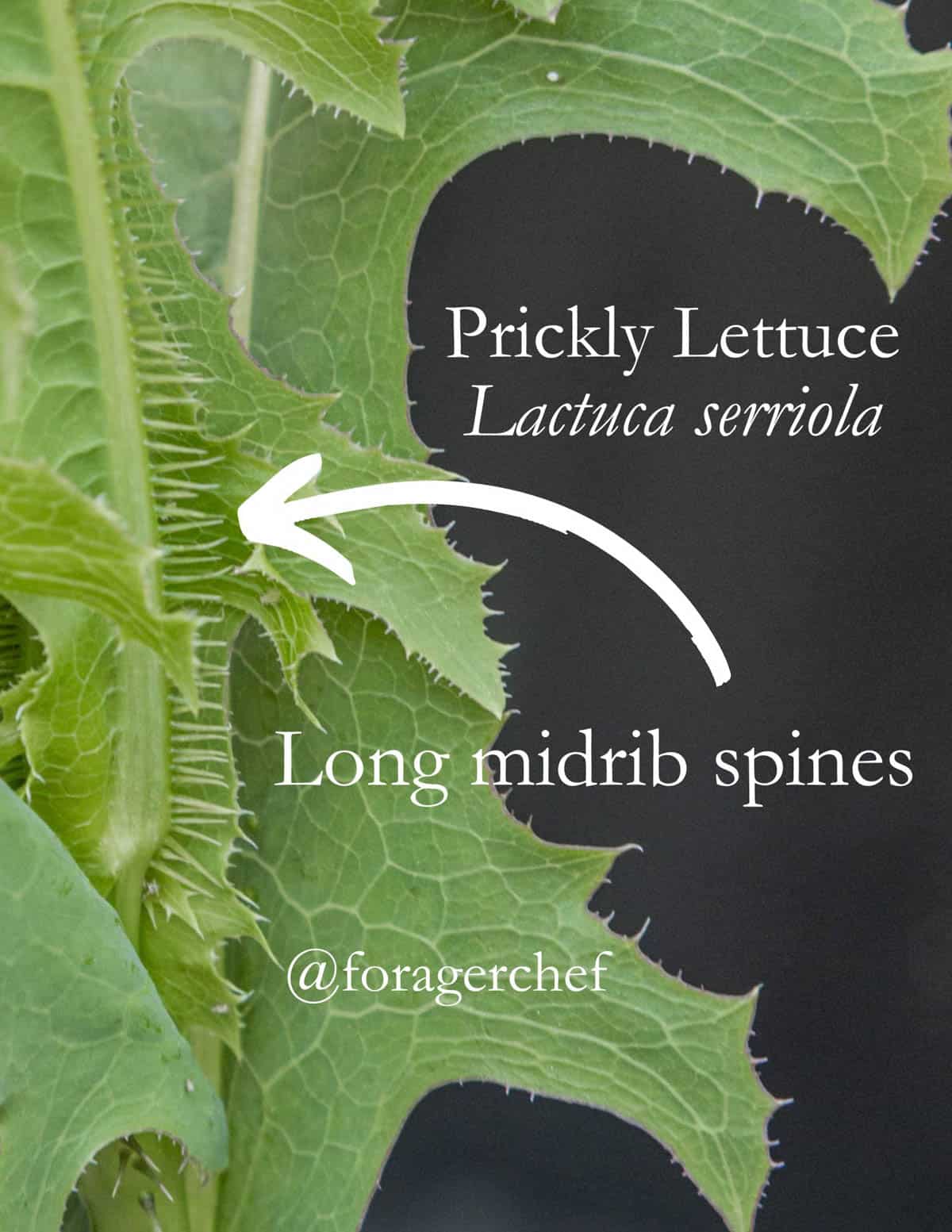
The greens are intensely bitter and should be blanched or boiled. But, even after blanching they're not a great edible and you may feel the texture of the spines.


Canadian Lettuce
If you get nothing else from this post it should be a desire to eat Canadian lettuce (Lactuca canadensis): the finest wild lettuce I've tasted. This is a widespread, common Lactuca across most of North America.

L. canadensis has long, shiny, lance-shaped leaves. The leaf margins have little to no teeth and the latex will brown quickly after the plant is cut. It has yellow flowers like prickly lettuce.


Tall Blue Lettuce
Just like it sounds, tall blue lettuce (Lactuca biennis) is tall. When young it can be confused with L. canadensis and the two plants will grow together. But, it's easy to separate as it's much hairier.
The leaf shape is slightly variable and usually has alternating palm-shaped (palmate) lobes on the leaves. Sometimes the leaf lobes can appear pinnately lobed.

The flowers of L. biennis can vary from faintly blue to nearly white, or yellow-ish blue. The leaves can also vary slightly in shape, which you can see below.


The taste of L. biennis is better than prickly lettuce, but it's still bitter. I like bitter greens, so if I find tender young plants I often eat them.
Harvesting Wild Lettuce
There's essentially three different parts of the plant to be harvested and cooked: first the young basal leaves that grow close to the ground, then the tender leafy clusters are essentially a head of wild lettuce. Finally, the tender tops of the plants can be cut off anytime before the individual flowers begin to branch off of the panicle.

As wild lettuce plants grow, the flower stalk becomes rigid (tough) to support the plant, but you can bend the growing top to see where it's tender like asparagus.
The tops can be harvested up until the point where the flowers begin to branch out, but after that they'll be tougher and can be slightly unpleasant to chew.

How to Cook Wild Lettuce
You can use wild lettuce greens in any dandelion recipe or recipe for cooked bitter greens. Plants with strong flavors can stand up to big flavors. Spicy foods and hot chili, tomato, cheese, smoked meat and beans-they're incredibly versatile.

Also, don't hold your breath for an iceberg wedge salad. Besides the occasional tender leaves of L. canadensis, I don't often eat wild lettuce raw. Besides improving the taste, cooking makes the plants easier to digest and eat in quantity.

No matter what you make, the initial process is the same. To prepare wild lettuce greens for cooking, blanch the greens in lightly salted water until just tender, shock them in cold water, squeeze dry, and cut into 1 inch pieces.
After par-cooking the greens can be used in any recipe calling for bitter greens. Very bitter plants can be soaked overnight in cold water after cooking to calm the flavor.

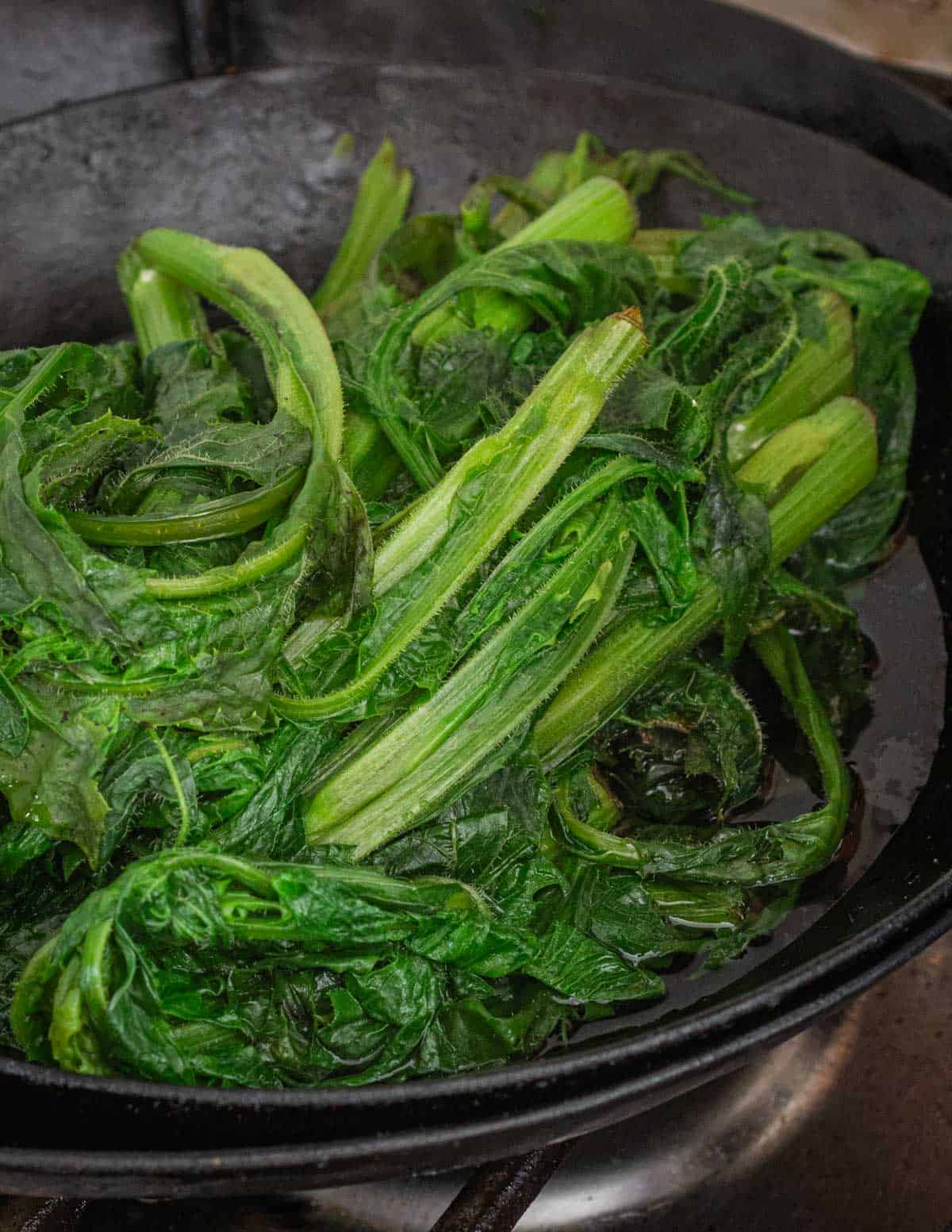


The classic Italian bitter greens with garlic and chili is my favorite everyday recipe. Lebanese hindbeh, or chicory with caramelized onions is a close second. Drown both of them with your best extra virgin olive oil.

Fave e cicoria is a famous Southern Italian dish of long-cooked bitter greens and chickpea puree. Bitter, spicy greens perfectly punctuate the mild, creamy beans. Serve it with toast.

Just like dandelions, bitter wild lettuces are good fermented into homemade kimchi. I like it added to fried rice and noodle bowls.
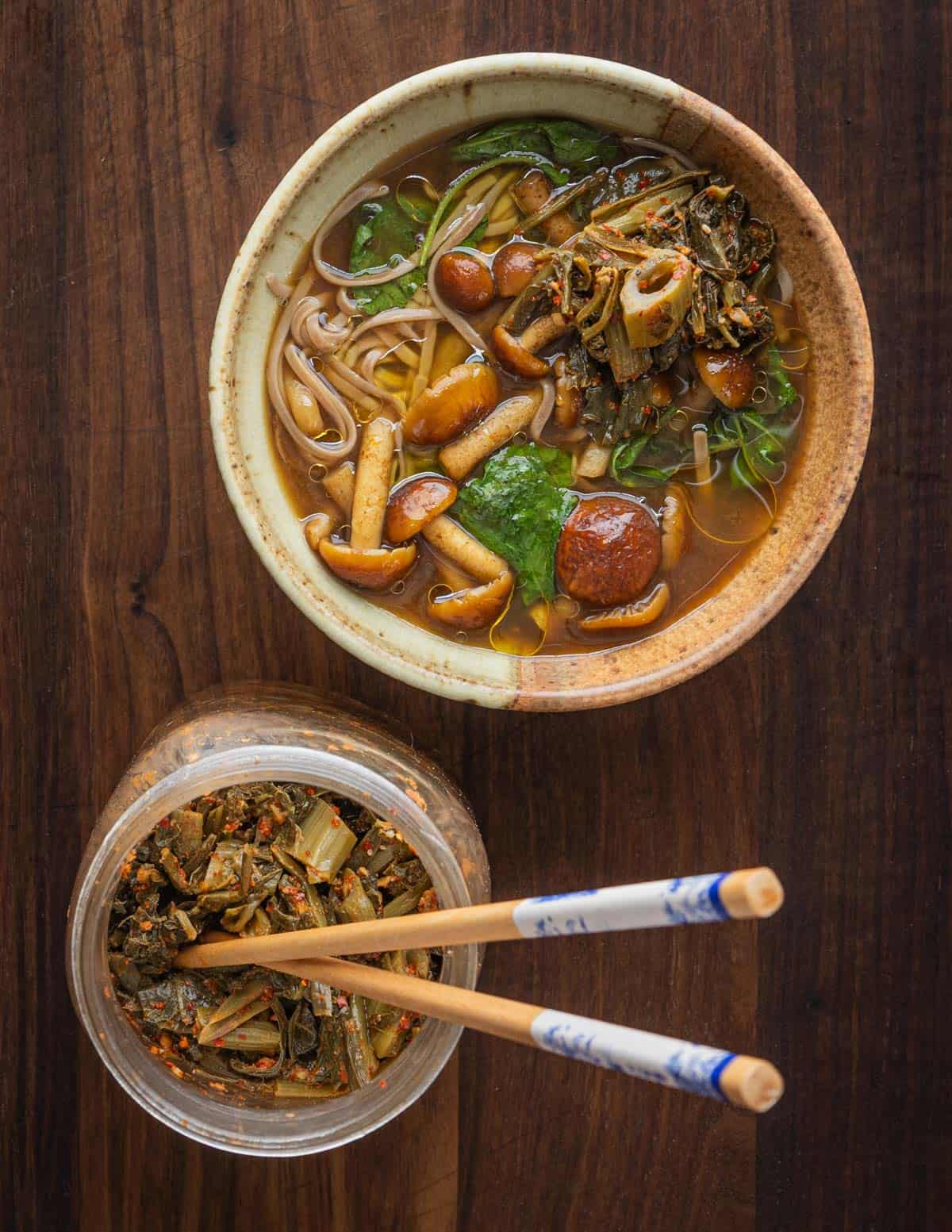
There's a full list of different recipes for bitter greens on my Dandelion Recipes page.
Related Posts
Wild Lettuce Medicinal Qualities
It's arguable that wild lettuce is better known as a medicinal plant that as a cooked green. Lactuca virosa is also known as "opium lettuce". Historically the milky latex of the plant has been prepared into a sort of "opium substitute" and used for pain relief. My friend Jesse over at Feral Foraging came up with a creative way to make latex resin (wild lettuce extract) from whole plants. His video below is really informative.

CJ Aspenson
Alan, Just as my frustrations to manage and determination to eradicate peaks, to once and for all, deal with this pesky, perennial wild lettuce garden patch--- I check in with you.... and sure enough, I can eat IT! I am reconsidering my actions. Thank you for your timely reassurance and RECIPES!! The photos and comparisons are outstanding. You are a treasure.
Alan Bergo
Thanks CJ.
Heather
Fantastic post, full of info about identification that can be hard to find, as well as great advice about cooking. Thanks!
Your book is wonderful too.
Alan Bergo
Hey thanks heather. I planted a lot of L. canadensis last year. Looking forward to seeing their second year of growth.
D
This is the best foraging post I have ever read. Such detailed identification tips and great photos + how to harvest + how to prep/cook + recipe suggestions! It has everything needed, and I learned so much. Thank you!
Alan Bergo
Hey Thanks Debra. Lots of work and images from over the years.
Carolyn Rapolas
totally agree
Ale
I don't know who to ask as I'm trying to use this for the pain relief method instead, but is it possible for wild lettuce to be toxic if boiled too long? I know this may not be something you're versed in, but I just need help because I don't want to give this to anyone and hurt them on accident. Thank you for your website and showing other ways to use it, I'm sorry if this is very odd to ask, but I don't know where else to turn.
Alan Bergo
Hello. Obv I prefer not to speak to medicinal aspects of plants as I’m not an expert, but I would assume what you’ve made is perfectly fine. Wild lettuce is a pretty tame plant imo and the “narcotic effects” of things like this are often really overblown. You’re on your own to do research though. I would start with tiny amounts, just like with trying new foods.
MistiDawn
Yesss!! Definitely
Crystal McLeod
Great article! I grew up in Abraham, West Virginia and had more than my fair share of wild lettuce and the immeasurable bounty those mountains provided my family. One of my favorite dishes my Mamaw and Mama used to make with wild lettuce was what we called “kilt” lettuce, hot bacon grease, vinegar, a little sugar and salt n pepper! Of course it took a huge mess of greens to make enough to feed everyone but it was well worth a couple hours of huntin to us youngens!
Alan Bergo
Hey thanks Crystal. That sounds GREAT.
Jackie Skrypnek
This was such an informative post - thank you! One question that keeps coming up for me: is it just as effective to steam greens rather than submerge fully in boiling water in order to retain more nutrition?
Margie kennelly
Thank you so much for sharing your knowledge about these lettuces, you have taken the time to show us the similarities and differences. I learn something every time I read your posts and sometimes I try your recipes . I bought your book a few years ago and it’s so interesting to know all these plants are right under my nose and I never knew it and treated the plant like it was a weed or pest. Thank you again for your time and talent.
Jay
Interesting post. Thank you. All I have available is prickly lettuce but I've found that dressed with a good olive oil and real balsamic vinegar makes an acceptable salad. A little added to a romaine salad is also good.
-- jay